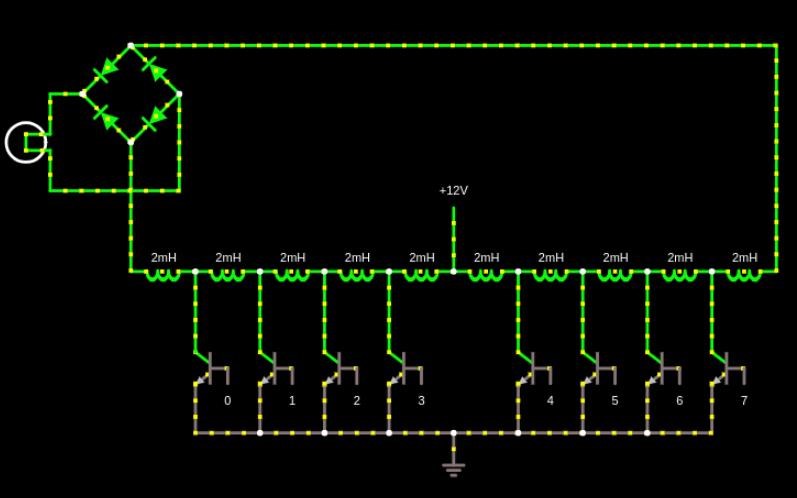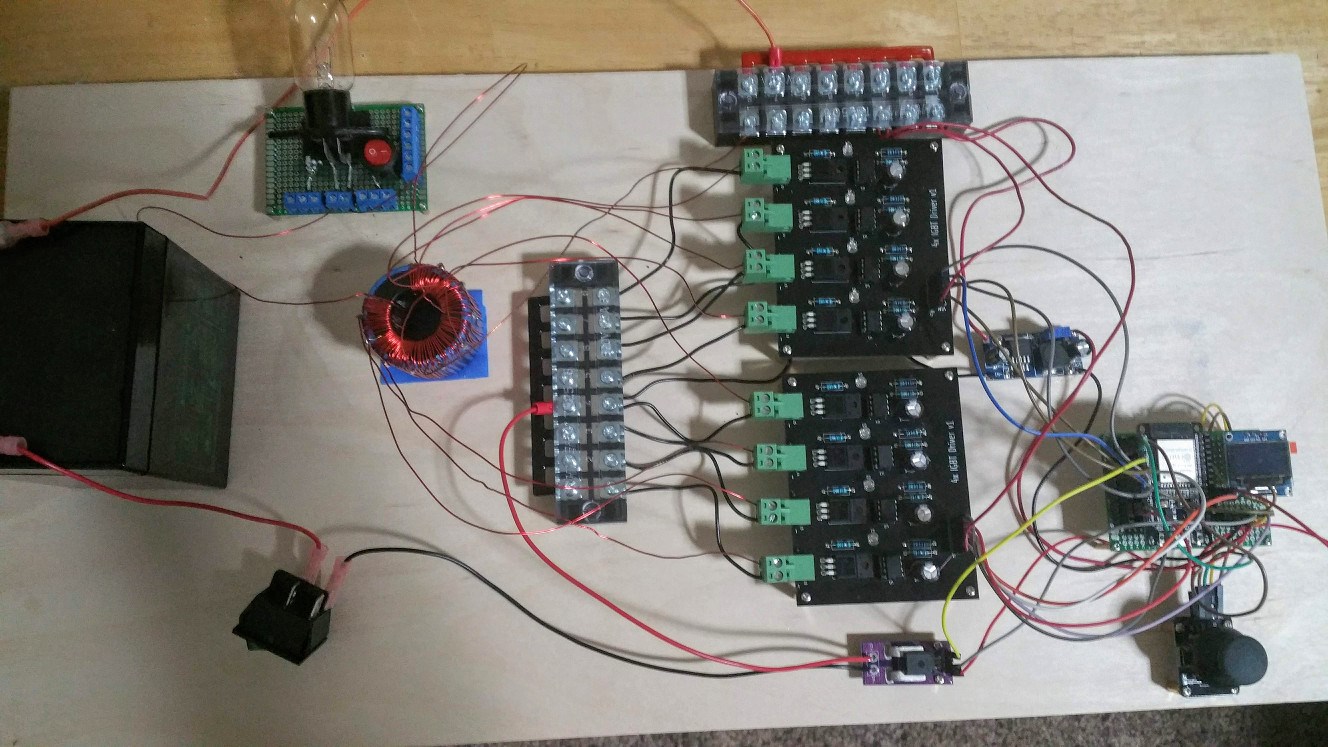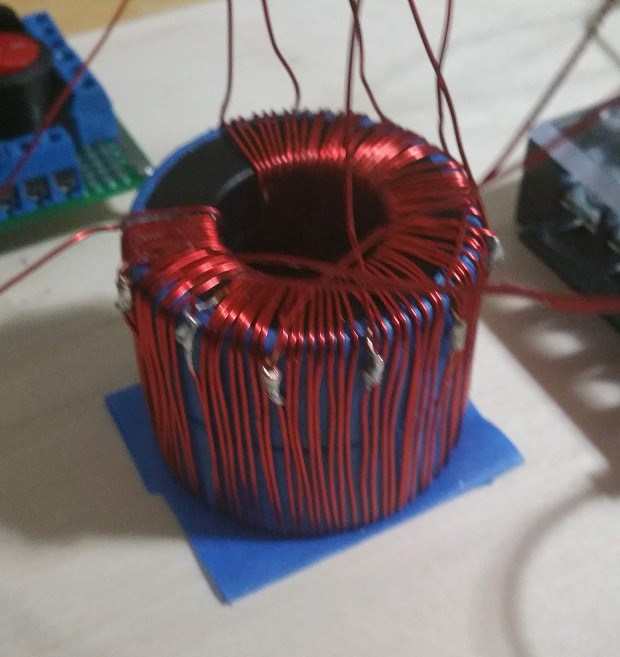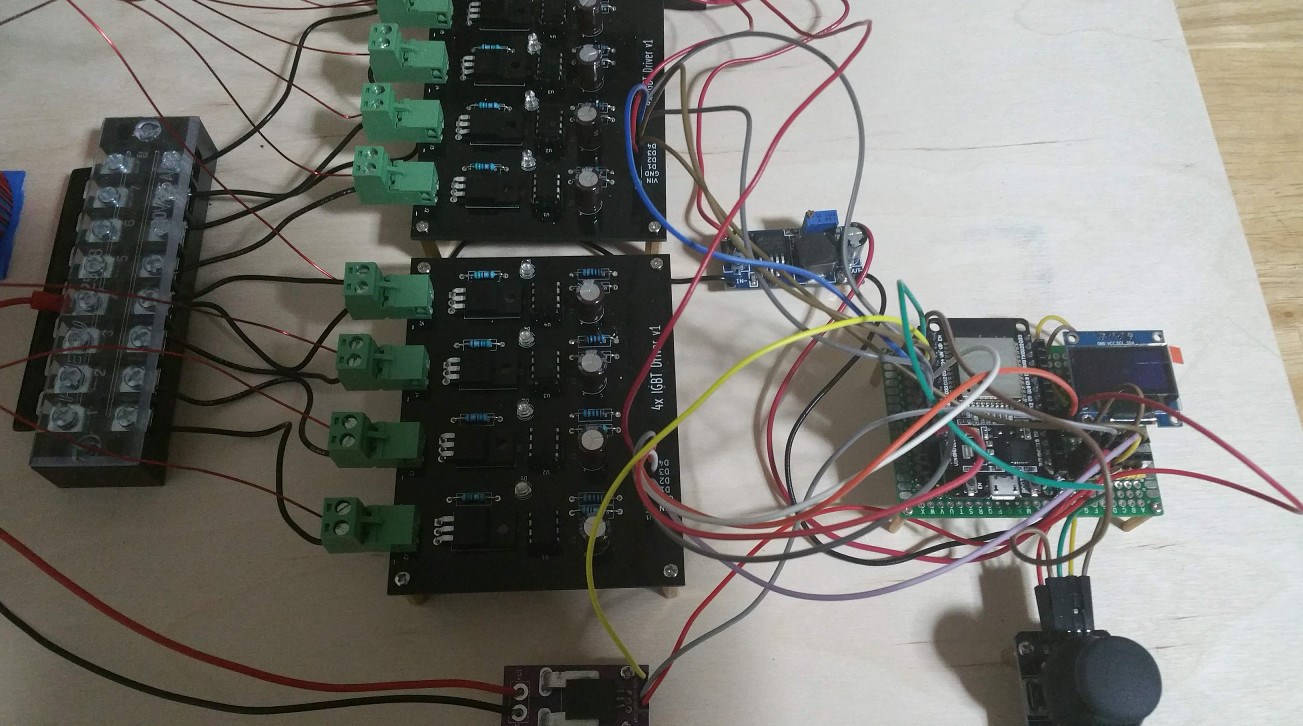So here is a little thing I shared with Chris earlier. He thought others might benefit from it and asked me to share it with a larger audience. I'm not making any claims at this time, but this device has done some strange things. I managed to destroy several 12-15W loads with it in under a second. I would urge caution and remind would be experimenters that this device will generate alternating currents that can be hazardous to one's health...
Here is my circuit summarized:

I'm not sure what to call my device or even if its worth naming at this point. The long string of inductors is simply a multi-tapped transformer wound on two stacked "nanoperm" toroids. I'll be experimenting with different configurations for the transformer piece so there may be better designs, but I'll include a picture to make it more clear.
The transistors shown in the schematic are IGBTs that do not have a reverse diode..They are controlled by an ESP-32 MCU.
There is a special firing order involved with the IGBTs. It is:
3 -> 4 -> 2 -> 5 -> 1 -> 6 -> 0 -> 7
When 4 is turned on 3 gets turned off, etc. For a given frequency f, a complete cycle would be completed. So at 60Hz this cycle is completed 60 times in one second. The on time for each step is not equal. The inductors close to the voltage source are on the least time. The timings are:
0 = 0.20, 1 = 0.15, 2 = 0.10, 3 = 0.05, 4 = 0.05, 5 = 0.10, 6 = 0.15, 7 = 0.20
I may also experiment with linear timings, but I don't think they will give better results. There is also an oscillatory version I am using that cycles back:
3 -> 4 -> 2 -> 5 -> 1 -> 6 -> 0 -> 7 -> 0 -> 6 -> 1 -> 5 -> 2 -> 4
To correct for the extra steps each timing is divided by 1.6. To explain this with integer math, lets say you were using an 8Mhz CPU and you could control timing by delaying for a certain number of clock cycles, if you ran this at 1000Hz, you would complete a full cycle in 8000 clocks. So you would turn 3 on for 0.05 * 8000 = 400 cycles. but when using the oscillatory version 3 would be on 0.05 / 1.60 * 8000 or 250 cycles. Anyway this is pretty much all there is to this thing.
Feel free to build it and experiment. If you do this I recommend starting with the oscillatory pattern, it seems to be the better one. I also have tried other patterns but they are not giving good results. Still there are a lot of permutations possible so feel free to play around with other ideas.
























